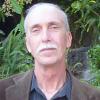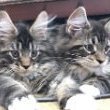Leaderboard
Popular Content
Showing content with the highest reputation on 06/14/2017 in all areas
-
Hello everyone!! Have you registered on the Clusterbusters “Patient Registry” yet? Over the years, Clusterbusters has built the largest worldwide patient database in the world. Become a member of the database and possibly a participant in a research project that will lead to better treatments and eventually a part of the cure. By completing this form, you are not registering for a specific study that is underway or that will start in the future. You are not agreeing to become a participant in anything. You are only agreeing to the possibility of being contacted in the future to ask for your participation. Research studies sometimes only require your participation from home. It may only require completing surveys or questionnaires. Some of you may have recently done this for the work underway at Yale University. Some clinical studies require your participation in other ways. Some may include travel. Each study has different requirements. Choice of participation is yours and that of the study investigators and does not involve Clusterbusters in any part of the process. This registry is open for everyone. There are no requirements of past, present or future choice of treatments or any particular cluster headache or human traits. People from all walks of life, all ages and every description, suffer from cluster headaches. We are presently involved in several ongoing research projects as well as several others that are in the long process of approval. As we are involved in research on an international basis, this survey is open to everyone worldwide. We encourage anyone with cluster headaches to respond and help inform others of its existence. As many studies focus on certain segments of the cluster population, episodics vs. chronics as an example, you may not be contacted for every study that is underway. Be a part of a better future for cluster headache patients and participate in our registry. As you will see again on the forms themselves, all of this information is and will remain completely private. The survey, all data and any and all future distribution is administered by the Clusterbuster’s Administrative panel and members of its medical advisory board. Information and people will move the research forward. Please be a part of this. Just the completion of the questions on this short survey, by the thousands that are included, helps gather important information. Please share this with others you may know that suffer from clusters. If you know of anyone that does not have access to a computer, contact us at info@clusterbusters.org and we will mail a written copy for completion and inclusion. To participate, please go to this link: http://tinyurl.com/n9ou73a Some of the questions may give you an idea of some of the projects we are currently working on and there will also be more information available at this years conference. Even if you can't make the conference, we'd love to have everyone here on the registry. Thank you Bob Wold Clusterbusters1 point
-
Well, for starters... I cope with the thoughts by knowing that I have a good support system, and a lot of people who love and would miss me if I were gone... And that usually prevents me from doing anything drastic. Knowing that, and that I am needed helps. Then there's the fact that the attack -will- end eventually... I might have another one later, but the one I'm in, will stop. Knowing that also helps. But mostly knowing I am loved, wanted, and cared for is the best thing to help keep me from doing anything drastic. It helps anchor me. Knowing I have unfinished work on this Earth. I'm not sure if that's what you're looking for... But the fact I am useful keeps me here. So your love and support for your husband matters, so much, more than you even know. The thoughts do come, sometimes just as a "I'd do anything to stop this.". It just kind of happens. But knowing that we have our supporters is what keeps us going. The fact that you're trying to help him, will also help him cope, too. <31 point
-
MAPS notes Just finished attending the last lecture of the Multidisciplinary Association of Psychedelic Studies (MAPS). Coined Psychedelic Studies 2017 this was the largest (to date) gathering of professionals, academics, lay therapists and those with a life long interest in the benefits of psychedelic modalities. There were researchers, clinicians, advocates and enthusiasts sharing data, experience and advice. Among those at this robust and vigorous event was Bob Wold representing Cluster Busters at an informational table and Brendan Burns sharing his personal story and knowledge. Emmanuelle Schindler presented the clinical study design and rationale setting the stage for presenting solid data at future meetings. Our cause was well represented. Certainly our situation is a bit one off from the mainstream but it is important we don't let the avant garde of this exciting movement forget our interest as psychedelics rapidly reenter current therapeutic options. I attended many of the talks and wish to provide a high level summary of some of the talks that may be of interest to those considering alternative cluster treatments. The videos of specific presentations are going to be available on You Tube and searching MAPS with the presenters name should guide you to the source. The program should be on the MAPS sight. No claims are made of unerring accuracy, lack of bias in interpretation or completeness. My best is all I have to offer. Stanislav Grof opened the lectures and included his work on breathing techniques to produce a psychedelic state. He is a well loved researcher in LSD psychotherapy prior to making LSD illegal and developed these techniques in the void left by draconian legislation. Many workshops have evolved based on his techniques and components are reminiscent of what Batch has suggested. There was much about herbal roots from around the world I don't want to spell but since we have limited input on things other than LSD and psilocybin I leave their usefulness to inevitable discussions. MDMA got lots of attention but no data for us. Sounds like great stuff for the right application. These will eventually crop up in one form or another. I will also reserve judgement on the large number of folks bemoaning their migraine experiences to Bob. The guy suggesting a stem cell transplant fixed his clusters will go on the shelf for now, Heaven points for Bob. Psilocybin was discussed in a significant number of presentations. The context was in death and dying, addiction, PTSD and pharmacology but the message was loud, clear and repeatable. The use of psilocybin in these context is safe, effective and long lasting. This included measures of anxiety, mystical experiences, squashing suicidal ideation and overall improvement in sense of self. Trait measures of forgiveness, life meaning and faith maturity are amplified in a sustained way. Psilocybin was given in a safe set and setting and included psychotherapy and counseling. Look up work at Johns Hopkins and NYU. Neuroimaging studies report pretty consistent findings. There is the well known interconnection throughout the brain on psilocybin. Decreased blood flow is seen in the Cingular nucleus. This results in slowing or blocking the brains inhibition of data inflow allowing for freer communication. There is desynchronization of the posterior Cingular nucleus and decreased inhibition. Basically psilocybin is believed to inhibit the inhibitor and allow free flow of information. Interestingly the brains Default Mode Network (DMN) decreases with immediate dosing but in 24 hours and then increases in a sustained way for a long time. Similar changes are seen in experienced 1000+ hour meditators. Meditation showed similar findings to a dose of psilocybin 25 mg / 70 kg. The posterior hypothalamus is activated by psilocybin and this activity can be affected by hormones, genetics and inflammation. UW- Madison presented participants in a pharmacokinetic study looking at dose relationships and physiologic safety. It was a Phase I trial to establish safety parameters. It was very safe at all doses. There were 3 dose regimens given a month apart and dosing was based on body weight. 0.3-0.6 mg/kg body weight. So if you weigh 154 lbs your largest dose was 42 mg. That is equal to 6.7-8.4 grams dried shrooms. (4 grams dried is equal to 20-25 mg psilocybin). No adverse physiological events and the participants report sedate to wild experiences. They sought each other out after the study and remain bonded. The question of dosing by body weight or standardized dosing was addressed. Study's showed no difference in outcome measures related to body weight. The experiences where all over the place irrespective of dose and body weight. Seems you get what you need? Looking at bad experiences on meds (bad trip) demonstrated guidance through the event in a safe set and setting was effective. Most related the experience to be profound even if seemed negative to sitters while occurring. Good experiences and bad experiences were latter judged helpful. Look up the Zendo project on psychedelic harm reduction and study the tenants of safe place, talk through not down, sitting not guiding and difficult is not bad. The biggest impression was all the 70-80+ year old wandering around with extensive experience in psilocybin and LSD use. Of course these represent folks who see a profound benefit of these substances in their lives. They are healthy, intelligent productive folks with mind blowing exposure to these substances. A pretty good real life testament to safety.1 point



